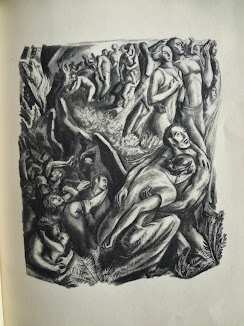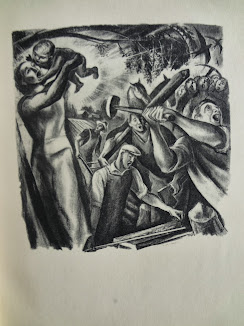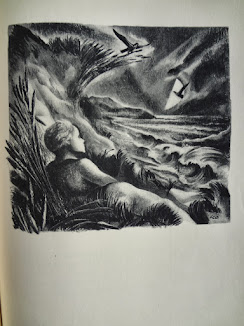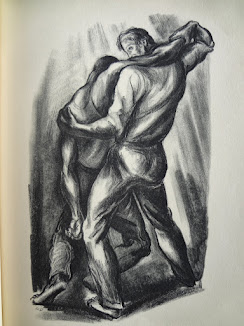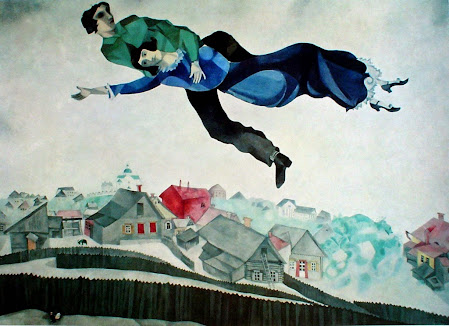I picked up David Merkner’s debut collection, The Rise & Fall of the Scandamerican Domestic, solely on the basis of the title. “Hey,” I said to myself, “I’m a Scandamerican domestic!” I mean, whatever that’s supposed to mean, because, as far as I’m aware, Scandamerican isn’t a recognized word, and using domestic as a noun is a little off-label. Or you can use the term domestic as a noun, to mean a servant (domestic staff) or a fight between family members (a domestic dispute), but it rings weird in the title, like a stutter or something bitten off. As it turns off, my lame close reading of the title is a pretty accurate encapsulation of the book for me, this uncoined yet immediately recognizable term rubbing up against the non-normative and ambiguous servitude and dispute of Midwestern domestic life. The whole thing was alarmingly close to home and disturbingly kinked, and I felt a little like, Jesus, man, shut the fuck up about our business in front of guests. Uff da.
I didn’t love this collection, but probably more because I felt an itchy, too tight familiarity with it than anything, a sweater washed and then blocked wrong. The stories themselves have an almost prosaic surrealism, where shit that could never happens happens not because the events violate the rules of physics, necessarily, but because they violate other less conspicuous but nevertheless ironclad rules of social reality. I almost don’t want to give examples because each time I tried to with my husband, I turned into this “and then, and then, and then” idiot, laying out inexplicably related events, then back-tracking and trying to tie up the connectives which just made it worse. A man tries to make out with his mother’s pot-bellied pig after murdering her brother by accident. A couple tries to paint their house which ends up being this slippery metaphor. A man slits a dog’s throat at a funeral. Which is all somehow funny in ways that I can’t explain, don’t really think is funny, but am nevertheless laughing at. And I’m not laughing haha, I’m laughing fucked. I’m laughing grief. This may be more me than it.
I thought a fair amount of the term “magical realism” while I read, wondering, as I do, about genre and what a mess it is. I’ve gotten my back up about the use of the term magical realism in the past, because I’m a nerd, and I end up thinking, bitch, that’s just a nationalist fantasy novel. And all fantasy novels are nationalism fantasy novels, from Twilight’s Volturi Catholic panic down to there won’t be a Shire, Pippin. The term seems too specific to a certain era of South American fiction, and used only on North American writers when they don’t want to get genre cooties on their weirdness. But Scandamericans would be magical realism if the Midwest had such a thing. (The Midwest doesn’t have old money or history either, being one of the problems of the Midwest, but the kind of problem that eliminates some and creates others.) It’s not fantasy fantasy, but more weirdly personal; a private life of the domestic wars.
Maybe the less coherent observation I’m groping for is that Scandamericans runs its harsh (sur)realisms in collection because we can’t even bring ourselves to novel length. We have to run at our fantastic, coded history in collected short fictions because we aren’t even a nation, but an interstitial accident of geography and inertia. We’re not even the conquest of useless but something worse and therefore more comic. We shouldn’t even be here, and what we have to cling to, as a people, is our anecdotal longevity in a place not actually made for people. (My bitterness with the Midwest right now may have more to do with the punishing cold I’ve been stuck in for the last forever, no end in sight.) I thought of Winesburg, Ohio a fair amount, and the ways MFA programs in the Midwest push the shit out of that (or did in the Jurassic Age when I was in college), and the ways the stories in Scandamericans triangulated a specific kind of person – a dude, maybe kids, a wife, a house in the Madison suburbs – instead of a place.
And speaking of MFAs, this collection has the the shine of the MFA all over it, that rock tumbler which grits prose in a way that often embeds itself in my nails. This is good MFA writing to me though, the kind that moves from rough to shine, and the endings positively fucking gleam. I don’t know why I’m being a bitch about craft – but I am, don’t mistake me – because this is some well written stuff, the kind of thing that winds and then strangles. It’s good. For whatever reason (and this phrase means “for reasons I know but won’t divulge”) the subject of Freud’s concept of the narcissism of small differences kept coming up this holiday season in my conversations. Talking to my brother and his newly minted fiance and casually calling him a hipster and watching that tightening in his eyes. I don’t care about hipsterism, because I’m the wrong gender, age, and BMI to give a shit about that. But he’s not, and I used the term, and it probably bugged him. Sorry. That was this book, Merkner to me.
The Rise & Fall of the Scandamerican Domestic hit me in the narcissism of small differences, in that place of close but not quite close enough. I can see see his truth because I hate it like I hate all things close to my truth but just across the kitchen table. I kind of hate this book because I get it. I kind of love it for the same reason. Not all of the short stories work, but the ones that hit me hit me in the face. The one about the couple painting their house hit me right in my profession as a house painter, all the notes I leave on a kitchen table over the course of a painting project turned over and written back. I feel priest-like in the things I see in my clients’ homes – in the sense that I see them but can’t relate them because it would be a violation – but I see them. I see them and keep silent. I don’t snoop, but I don’t have to. We wear it all on our sleeves but then tuck them hard into pockets. The connectives of course are surreal.
I got the violence in the story of the funeral, my cousin and I holding onto the back of one another’s necks, forehead to forehead, while he laid the most immaculate guilt trip on me like fine fucking china. He wanted me to go to the second funeral, the one to be attended by people I despise. I resisted and drove home, and everyone in the car fell asleep. I watched the landscape go past like the only person who could, and later got the story of it, the second funeral. I would have murdered at that event, slit the throat of a dog in the back bedroom, and then I would have passed it off just the like the protagonist of the short story, the way you can pass off the murder of a dog in the back bedroom. You can pass off anything in the right social situation, stand like a mask and joke. It’s not funny haha but funny apocalypse. It’s funny Revelations according to Hans.
And although it looks like I’m dogging on this collection, I’m really not. There’s a story about a man who goes with his daughter down into a mine in “the only mountain in Wisconsin” – mountains being something the Midwest doesn’t have either – and sees a vision of her as an adult. Sounds lame when I relate it, but that last image, the daughter waving silently from a rock like a siren, and the daughter waving back just scrambled me. The candlelight vigil in another, all of the people turning away from the woman in whose name they are there. I can relate my irritations easier than I can my affections, because the affections are so fragile and inexplicable. The old saw about familiarity and contempt.
Fuck, I don’t know. The best and most true thing I can say about this collection is that it hit me where I live in ways that I usually only find in sex writing by the French or narratives of the zombie apocalypse. (Make with that what you will.) I’d like to see Merkner do something long form, because he fairly kicks the shit out of the short form (except for the microfictions, but then me and microfiction are not friends, so it might just be me.) It was kinda perfect to read a short story or two in the middle of the holiday shitshow, parceling out this deranged comedy of the domestics after living through the same. Well done, me. Perfect timing.
 The idea of
The idea of 



